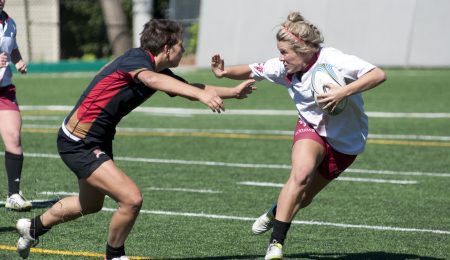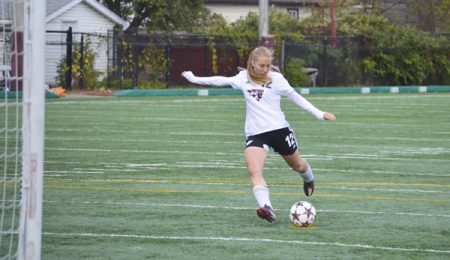Health sciences student finds connections between Quidditch position and athletic background
Emily Manns | Fulcrum Staff
Illustration by Mathias MacPhee
No longer just for the fictional world of J.K. Rowling’s Harry Potter series, Quidditch has been gaining ground as a legitimate sport in many North American universities—combining a love for Harry Potter with the competitive nature of sports.
Daniel Stojanovic, a third-year health sciences student at the University of Ottawa, has been a member of the U of O Quidditch team since his first year, and has tried out every possible position on the pitch. During his time on the team, Stojanovic noticed there tends to be two kinds of people who are drawn to the sport: Harry Potter fans and sports fans. In a project for his anthropoplogy class, Stojanovic focused on the sports fans who are drawn to Quidditch, and made some interesting connections between their Qudditch positions and their sport histories.
One of the first things that Stojanovic noticed was that Quidditch attracted a very specific type of sports fan—those who had a case of Potter-mania—but the players who stay with the team are those who share the same qualities as athletes in traditional sports.
“People who are attracted to the Quidditch team were sort of the Harry Potter enthusiasts,” said Stojanovic. “They tend to be filtered through the sports culture, so that if they don’t really support the idea of self-improvement, teamwork, or commitment, they get filtered out of the Quidditch team … just because they don’t have the same draw to keep going.”
Based on this filter system, the team is usually left with the sports enthusiasts who are “hard-working, competitive, and team-ethic oriented,” but also “open-minded and accepting of the goofiness of Harry Potter,” said Stojanovic. This inspired Stojanovic to look at how the players play the game, and how the skills they acquired from playing previous sports are applied to their chosen Quidditch position.
By observing the team, Stojanovic noticed certain players were able to adapt more naturally to the different aspects of playing this unique sport—like the requirement of holding onto a broomstick with one hand while handling the ball with the other. He also noticed “the way they adapt is based on what they have done before in their sports history.” This is where the players’ cultural sports background kicks in.
While observing the players during Quidditch practice, Stojanovic was able to identify several different sports they most likely played beforehand. Soccer players, for instance, had better coordination and manoeuvrability skills when trying to get around other players, and normally chose positions like the chaser, where the player is required to weave his or her way through the opponents to score a goal. Rugby and hockey players, on the other hand, were more offensive and better suited for tackling and pushing their way through by force, and normally took up positions as beaters. Some sports backgrounds, like volleyball, were more difficult to identify, but many of Stojanovic’s hypotheses proved to be correct.
“If you look at some anthropology papers, you hear about things like how people from different countries walk differently, and these are just cultural things that you inherit and you don’t really realize it just because that’s the way you’ve been doing it,” said Stojanovic. “So I decided to take that and look at it to see if I could see that happening in Quidditch.”
So if you ever go out to watch a game of Quidditch, challenge yourself by seeing if you can pick out the different sports backgrounds of the players—Stojanovic promises that it will give you a “whole new dynamic when you watch the game.”




